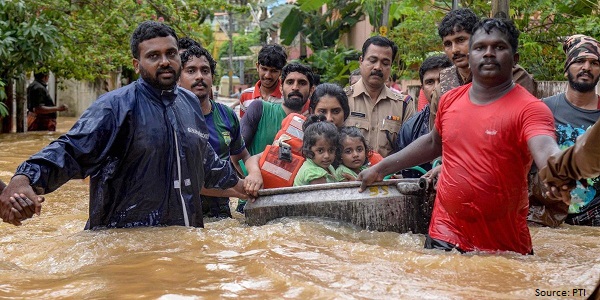
Deforestation in Kerala, the colonial legacy and afterward
6 September 2018
This blog is part of a series on policy decisions, the causes and consquences of the Kerala floods. The first blog can be found here.
To continue the chronology of events in the taming and deforestation of the Western Ghats with which I ended last week’s blog, in 1864, Dr. Dietrich Brandis, a qualified forester, was appointed as the first Inspector General of forests. He fortified the thinking of those days, that forests were a nearly inexhaustible resource for several materials essential for industrial progress, and therefore, the government had the first claim on whatever forests had to offer. His thinking dominated the provisions of the first Indian Forest Act, enacted in 1865. In 1878 the act was revised to provide for the classification of forests into Reserve and Protected forests and brought into force in provinces. In 1906, the Imperial Forest Research Institute established in Dehra Dun; it continues to be the premier institution for the training and capacity development of officials recruited into the Indian Forest Service. In 1910, a Board of Forestry was created at national level and in 1921, following the enactment of the Government of India Act 1919, forests become a provincial subject due to political reforms.
The institutional reforms of the last decades of the 19th century, opened the floodgates – a grim metaphor in the light of the current devastation of Kerala – to the wholesale exploitation of India’s forests. These were destroyed extensively for timber, railway sleepers, charcoal (to manufacture producer gas that was used to run vehicles) and for food cultivation, forest conservation was basically focused on addressing colonial needs. Conservation was a monopoly; the ruthlessly guarded preserve of forest departments. They encouraged monocultures and planned afforestation, with scant regard, or even awareness of the grievous biodiversity loss that such policies would trigger. These tendencies found their peak during the First World War and then again, during the Second World War.
Kerala was not immune to these national trends. The Princely States of Cochin and Travancore followed the same path to prosperity. The Mullaperiyar dam was built on the upper reaches of the Periyar river a century back; the British needed the dam to take water over the Western Ghats to the parched rain shadow areas of Madras Presidency lying to the east of the Ghats. In the foothills of the Western Ghats to the east of Chalakudy, where much of the recent devastation by floods has happened, the Rajah of Cochin built the Chalakudy tramway, a wood fired narrow gauge railway line, which was entirely devoted to moving timber from the lush, tropical forests, to the river and the main railway line below. No trace of the line remains today, except for the embankments of the old railway line.
There was a clear conflict between the recognition of traditional rights of people and the needs of government too. And to the credit of conscientious people within the government, there were plenty of differences of opinion too, regarding the idea fostered by the Government of India that forests ought to be the government’s preserve. The Madras Presidency for instance, initially rejected the adoption of the 1876 Indian Forest Act on the ground that the traditional practices and rights of people to use forest produce were not recognised in this law. Later on, they buckled to the relentless pressure of the Government of India, and relented.
The first 25 years following independence saw a continuance of colonial forest policies. The National Forest Policy 1952, while it drew attention to evolving systems of balanced and complimentary land-use, checking denudation in mountainous regions, river bank erosion, and sea erosion and sand dune shifting, establishing tree lands for community utilisation in order to deflect pressure from forests and improving grazing grounds and fuel wood availability, also spoke the language of exploitation. It said that forests must be managed for the sustained supply of timber and other forest produce required for defence, communications and industry and maximisation of annual revenue in perpetuity consistent with the fulfilment of the needs enumerated in the policy. The integration of princely States and nationalisation led to further loss of forests. Even though the biodiversity conservation movement began to pick up, it was not strong enough to stem the progressive loss of forest habitats. The focus continued to be on revenue earning from timber and commercial forestry. The subject of ‘Forests’ was also shifted from the State list, to the Concurrent list in the Constitution.
In Kerala, after Independence, the lower reaches of the Periyar’s tributaries were dammed by the Peechi and Vazhani dams and the main river was again dammed by the Idukki hydro-electric project. An engineering achievement that involved an underground power house as well. Finally, not less than thirty five major and minor dams have been constructed in Kerala. Each one of them has considerably submerged precious forest and diminished the sponge like quality of the Western Ghats. The only success of any note by conservationists was the successful thwarting of the idea of building a dam in the Silent Valley in the northern part of the Western Ghats. This would have destroyed the habitat of several rare species of animals and plants, including that of the Lion Tailed Macaque, a shy, tree dwelling primate that is rarer than the tiger in India.





